Amphitheatrum Flavium (Colosseum) by night

Amphitheatrum Flavium (Colosseum) by night



AE coin, 5.07 grams, 21 mm., 250 AD, Mint of Alexandria Troas
Obv./ CO-L TROA, bust of Tyche with turreted crown
Rev./ COL AVG, in exergue TRO, She-Wolf with Twins
——-
The coin pictured above, minted under the emperor Gallienus (253-267 AD), is an example of the so-called anonymous, pseudo-autonomous or civic coins struck in the mint of Alexandria Troas under the Roman rule. The imperial bronze coins struck in the mint of Alexandria were mostly issued between the reign of Antoninus Pius and that of Gallienus.
The goddess Tyche, depicted on the obverse of the coin, was the Greek tutelar deity governing the fortune and prosperity of a city (similar the the Roman Dea Fortuna). On the reverse, the Lupa (She-wolf) nursing the twins Romolus and Remus recalls the legendary foundation of Roma.
The city of Alexandria Troas was located on the Aegean Sea in the ancient Troad region, part the Roman province of Asia (present-day Turkey).
Around 301 BC, the city changed its name from Antigonous to Alexandria after Alexander the Great of Macedonia. Under the emperor Augustus, the city became a Roman colony with the name of Colonia Alexandria Augusta Troas.
References:
© 2021 Sestertius
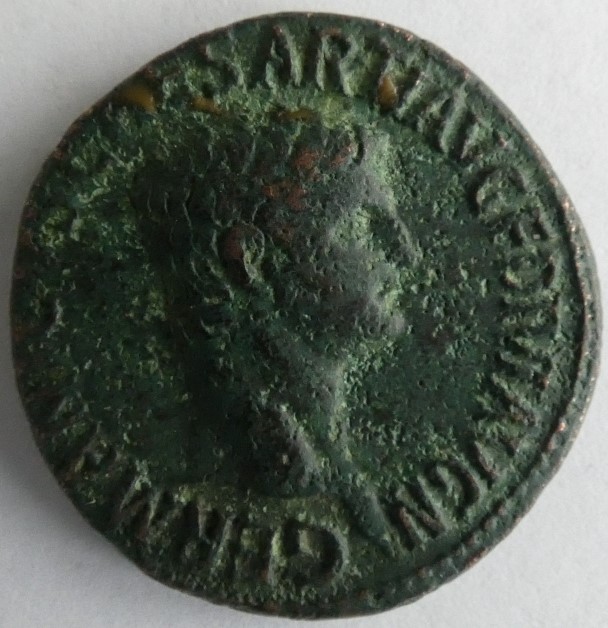

Fig. 1 :
Bronze As dedicated to Germanicus struck under Claudius (50-54 AD; 13 grams, 28 mm.; pvt. collection)
Obv./ GERMANICVS CAES TI AVG F DIVI AVG N; Germanicus’ Head
Rev./ TI CLAVDIVS CAES AVG GERM P M TR P IMP P P; S C
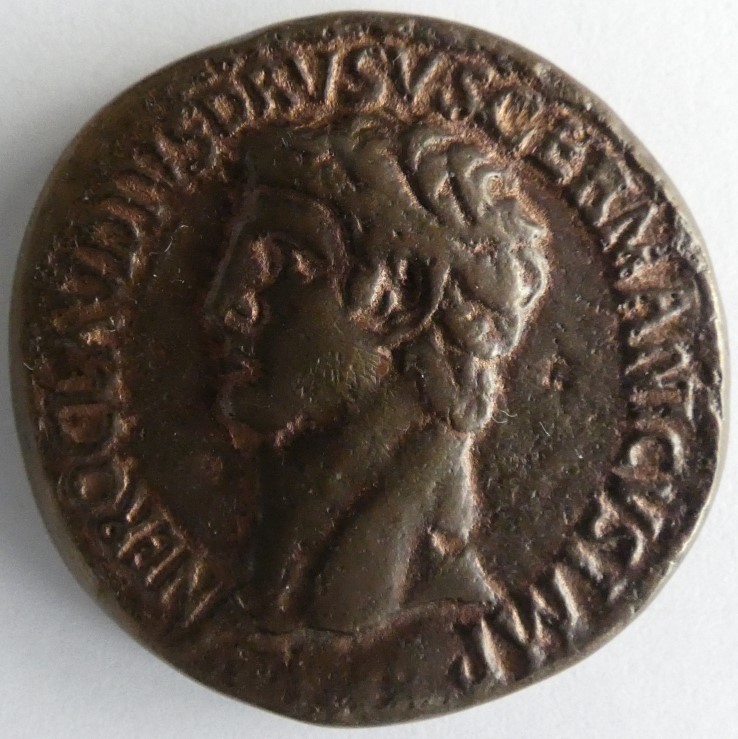
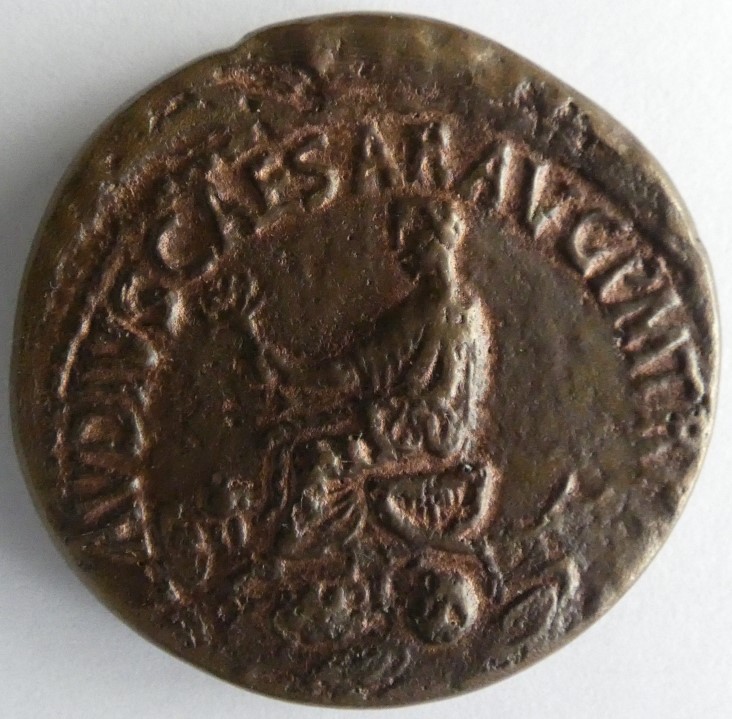
Fig. 2:
Bronze Sesterce dedicated to Drusus Maior struck under Claudius (41-50 AD; 21.28 grams, 33 mm.; pvt. collection)
Obv./ NERO CLAVDIVS DRVSVS GERMANICVS IMP; Drusus’ Head
Rev./ TI CLAVDIVS CAES AVG P M TR P IMP; S C; Emperor Claudius sitting on arms
—————
Claudius (Claudius Caesar Augustus Germanicus) was born in Lugdunum (Lyon) in 10 BC and died in Rome in 54 AD. He was the brother of Germanicus and the son of Drusus Maior.
Nero Claudius Drusus (38 BC-9 BC), also called Drusus Maior, was the son of Tiberius Claudius Nero and Livia Drusilla. After having divorced from Tiberius Claudius, Livia married Augustus while she was pregnant with Drusus. Tiberius, the future emperor, was Drusus’ elder brother.
Drusus was a valiant commander under the Augustus’ principatus. He was Legatus Augusti pro praetore in Gallia (15 BC) and carried out several military campaigns against the German tribes, like Catti, Usipeti, Sicambri, Marsi, Cherusci etc.. He brought his legions until the Weser and Elbe rivers. Drusus is also remembered to have built a channel in Germany so as to connect the river Rhine with the North Sea, an impressive grandiose work that was named Fossa Drusi after his name.
With Antonia Minor (daughter of Marcus Antonius and Octavia, sister of Augustus), Drusus had three children: Germanicus, Livilla and Claudius. Both Tiberius and Claudius will become emperors.
Drusus Maior died in Germania in summer 9 BC falling from his horse. The Senate posthumously granted him the hereditary honorific title “Germanicus”, which would be used by many members of the Iulio-Claudia dynasty.
After Drusus’ death, the Romans did not succeed to consolidate their power in Germania Magna. The Roman expansion in Germany was halted by the tragic defeat and massacre, in the Teutoburg Forest, of three Roman legions led by the general Publius Quinctilius Varus (the so-called Clades Variana, September 9 BC) ). The defeat was suffered by a coalition of Germanic tribes led by Arminius. Arminius was a member of the tribal aristocracy of the Cherusci people who had received Roman citizenship and had been enrolled as an officer in the Roman army. He betrayed Varus and his Legion comrades in order to organize the ambush in the Forest, while his brother Flavus, a legionnaire too, remained faithful to Rome.
Germanicus Iulius Caesar (15 BC-19 AD), known as Germanicus, was adopted by his uncle Tiberius after the death of his father Drusus Maior.
Amongst others, Germanicus is remembered for having revenged the defeat of Teutoburg by defeating Arminius and the Germans tribes in the battle of Idistaviso (16 AD) and recovered two out of three Legion Eagles lost in the Teutoburg battle. Notwithstanding this Roman success, the emperor Tiberius decided to set the northern boundaries of the Roman Empire along the Rhine and Danube rivers. Tiberius likely assessed that it was too much expensive in terms of men and financial resources to take over such a vast, wild and hostile territory.
Later, Germanicus was sent in Syria by Tiberius, where he fell ill and died in 19 AD. The Governor of Syria, Cnaeus Calpurnius Piso, was suspected to have poisoned Germanicus.
© 2021 Sestertius

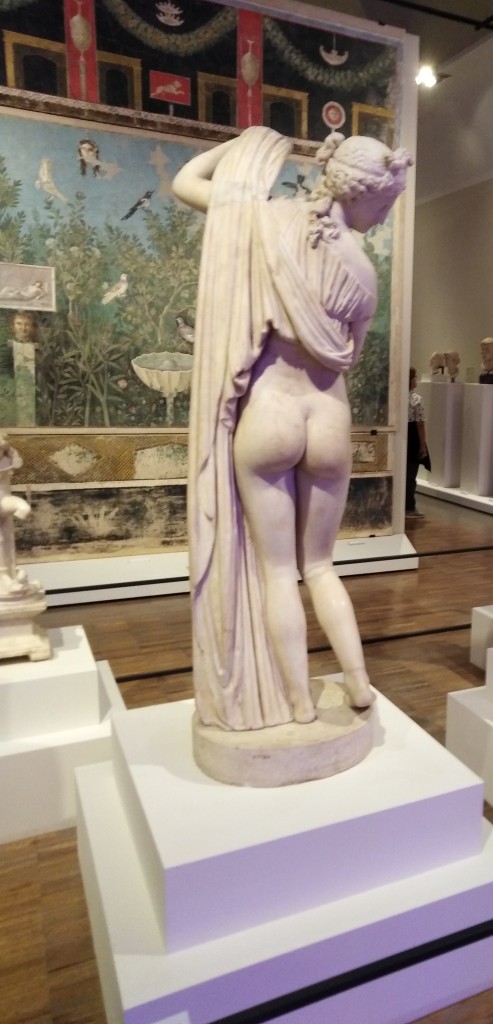
On the Kalendae Apriles (April, 1st), in ancient Rome, a feast called Veneralia was celebrated. This festival was celebrated in honour of the deities Venus Verticordia and Fortuna Virilis.
Here below, an excerpt from the Ovidius’ Fasti (8 AD). Scroll down for an English translation.
P. Ovidius Naso, Fasti, Liber IV
Kalendae Apriles
Rite deam colitis, Latiae matresque nurusque et vos, quis vittae longaque vestis abest.
aurea marmoreo redimicula demite collo, demite divitias: tota lavanda dea est.
aurea siccato redimicula reddite collo: nunc alii flores, nunc nova danda rosa est.
vos quoque sub viridi myrto iubet ipsa lavari: causaque cur iubeat, discite, certa subest.
litore siccabat rorantes nuda capillos: viderunt satyri, turba proterva, deam.
sensit et opposita texit sua corpora myrto: tuta fuit facto, vosque referre iubet.
discite nunc, quare Fortunae tura Virili detis eo, gelida qui locus umet aqua.
accipit ille locus posito velamine cunctas et vitium nudi corporis omne videt;
ut tegat hoc celetque viros, Fortuna Virilis praestat et hoc parvo ture rogata facit.
nec pigeat tritum niveo cum lacte papaver sumere et expressis mella liquata favis:
cum primum cupido Venus est deducta marito, hoc bibit; ex illo tempore nupta fuit.
supplicibus verbis illam placate: sub illa et forma et mores et bona fama manet.
Roma pudicitia proavorum tempore lapsa est: Cumaeam, veteres, consuluistis anum.
templa iubet fieri Veneri: quibus ordine factis inde Venus verso nomina corde tenet.
semper ad Aeneadas placido, pulcherrima, voltu respice, totque tuas, diva, tuere nurus.
Dum loquor, elatae metuendus acumine caudae Scorpios in virides praecipitatur aquas
English translation:
P. Ovidius Naso, Fasti, Book IV
April, 1st (Kalends)
Perform the rites of the goddess, Roman brides and mothers, And you who must not wear the headbands and long robes. Remove the golden necklaces from her marble neck, remove her riches: The goddess must be cleansed, complete. Return the gold necklaces to her neck, once it’s dry: Now she’s given fresh flowers, and new-sprung roses. She commands you too to bathe, under the green myrtle, And there’s a particular reason for her command (learn, now!). Naked, on the shore, she was drying her dripping hair: The Satyrs, that wanton crowd, spied the goddess. She sensed it, and hid her body with a screen of myrtle: Doing so, she was safe: she commands that you do so too. Learn now why you offer incense to Fortuna Virilis, In that place that steams with heated water. All women remove their clothes on entering, and every blemish on their bodies is seen: Virile Fortune undertakes to hide those from the men, And she does this at the behest of a little incense. Don’t begrudge her poppies, crushed in creamy milk and in flowing honey, squeezed from the comb: When Venus was first led to her eager spouse, She drank so: and from that moment was a bride. Please her with words of supplication: beauty, Virtue, and good repute are in her keeping. In our forefather’s time Rome lapsed from chastity: And the ancients consulted the old woman of Cumae. She ordered a temple built to Venus: when it was done Venus took the name of Heart-Changer (Verticordia). Loveliest One, always look with a benign gaze On the sons of Aeneas, and guard their many wives. As I speak, Scorpio, the tip of whose raised tail Strikes fear, plunges down into the green waves. (Source: Poetry in Translation, Translated by A. S. Kline © Copyright 2004)

Roman sarcophagus with grape harvest scenes at Musei Capitolini, Rome
(M. Valentini) – Maybe not everyone knows that, under the baroque square of Piazza Navona in Rome, the remains of the Stadium of Domitian can still be admired.
Actually, the Stadium was built by the Emperor Domitian (Titus Flavius Domitianus), who reigned from 81 to 96 AD. He was the son of the Emperor Vespasianus and younguer brother of Titus.

The Stadium was built at the Campus Martius, near the Theater of Pompey. Based on the Greek models, it was mostly used for athletic competions, that’s why it was also known as Circus Agonalis, from where the name Piazza Navona comes from. The Stadium had approximately 15,000 – 20,000 seats.
Here below, some pictures of the ancient Stadium taken by me.

The so-called Arch of Janus in Rome was probably built in the middle of the 4th century CE and likely it is not related with the God Ianus. It is thought to be an arch dedicated to Costantinus I or to other emperors like Costantius II as well as just a covered meeting place in the Forum Boarium since the word Ianus in latin means also a covered passage.
| Date / Authority | 161-180 CE / Roman Empire – Marcus Aurelius |
| Denomination / Metal | Sestertius / AE (Bronze) |
| Minting Place (Zecca) | Roma |
| Obverse (Dritto) | ANTONINVS AVG TR P XXIII above laureated head of M. Aurelius |
| Reverse (Rovescio) | SALVTI AVG COS, S C, figure of Salus, standing, left, feeding a snake out of a a patera, left hand holding a spear, S C |
| Weight | 21.13 grammes |
| Diameter | 30 mm. |
“Be solicitous only to live well for the present; and you may go on till death, to spend what remains of life, with tranquillity, with true dignity, and complacence with the divinity within you” (M. Aurelius, “Meditations”)
Marcus Aurelius was born in 121 CE and died in 180 CE. He was a Roman emperor from 161 to 180 and a Stoic philosopher.
His name at birth was probably Marcus Annius Verus like his father, the praetor Marcus Annius Verus. After his father’s death, he was raised by his grandfather and later adopted, together with Lucius Verus, by his uncle, Antoninus Pius. After the death of the emperor Antoninus Pius, he reigned together with Lucius Verus until 169 and, after the death of the latter, he reigned alone until 180.
Between the years 170 and 180 he wrote the so-called Meditations which are considered a masterpiece of the Stoic philosophy.
The equestrian bronze statue of Marcus Aurelius at the Capitoline Museums is the only bronze statue of ancient emperors survived in Rome. Differently from many other bronze statues, the Marcus Aurelius’ one was not melt down by the iconoclast fury of the christians, probably, because it was thougth to be a statue of Costantine, the first emperor that officially legalized the christian cult. Until 1981, the statue was standing in the middle of Piazza del Campidoglio (the “Capitolium Square”) where it was placed in 1538 during the redesign of the Square made by Michelangelo Buonarroti. Some years after the relocation of the original bronze statue in the Museums, a replica was put in the Square.
References:
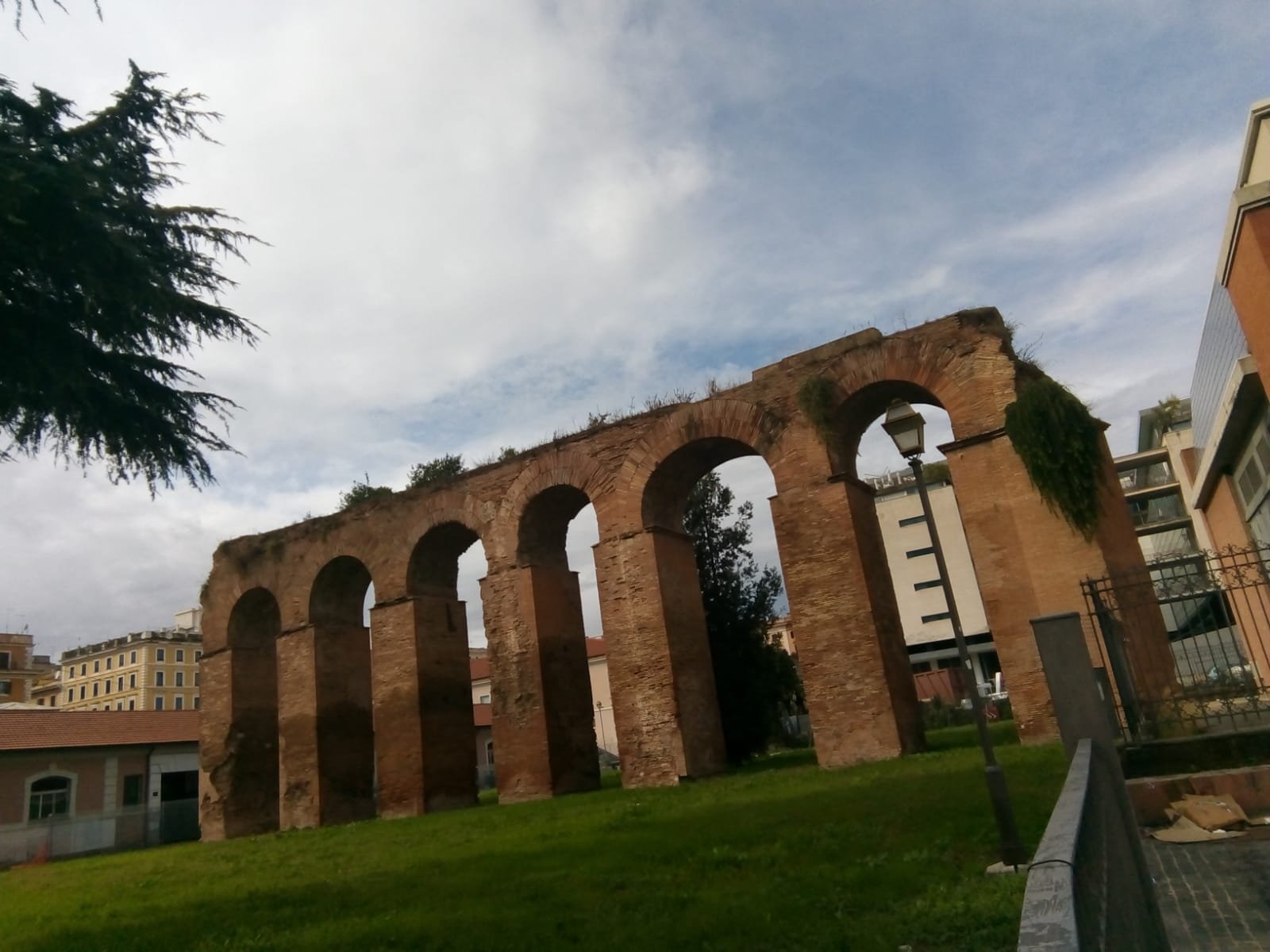
(m.v.) – Poco tempo fa, a Roma, abbiamo fatto una piccola escursione archeologica urbana con il trenino “Termini-Giardinetti”. Il Trenino, fino ai primi anni ’80, arrivava sino a Fiuggi seguendo inizialmente il tracciato della Casilina per poi proseguire lungo la via Prenestina. In seguito, la sua corsa fu limitata al solo suo tratto urbano fino alla frazione di “Giardinetti” e pochi anni fa, per evitare che facesse concorrenza alla nuova (e inutile!) Metro C che correva parallela al suo tracciato, si è deciso di fermare la sua corsa a Centocelle.
La tratta superstite del Trenino percorre, come detto, la via Casilina – l’antica via Labicana – costeggiando l’Acquedotto Felice, costruito nel XVI° secolo sotto il Papa Sisto V. L’acquedotto fu chiamato Felice dal nome del Papa, Felice Peretti, e fu costruito lungo il tracciato, e riutilizzando i resti, degli antichi acquedotti dell’Aqua Marcia, dell’Anio Novus e dell’Aqua Claudia. Gli ultimi due acquedotti romani, nella parte finale, prima di arrivare allo snodo di Porta Maggiore, viaggiavano sovrapposti utilizzando i medesimi fornici e parallelamente all’acquedotto Claudio.

Il capolinea del Trenino si trova presso le “Ferrovie Laziali” della Stazione Termini, al confine del multietnico quartiere Esquilino, presso il cosiddetto Tempio di Minerva Medica. In realtà, i resti della maestosa aula decagonale, forse un ninfeo, appartengono ad un grande edificio del IV° secolo d.C. sorto nell’area un tempo facente parte degli Horti Liciniani.
Lo sferragliante Trenino attraversa l’imponente Porta Maggiore – costruita sfruttando le arcate dei più antichi acquedotti nell’ambito di quella grande opera di fortificazione dell’Urbe voluta
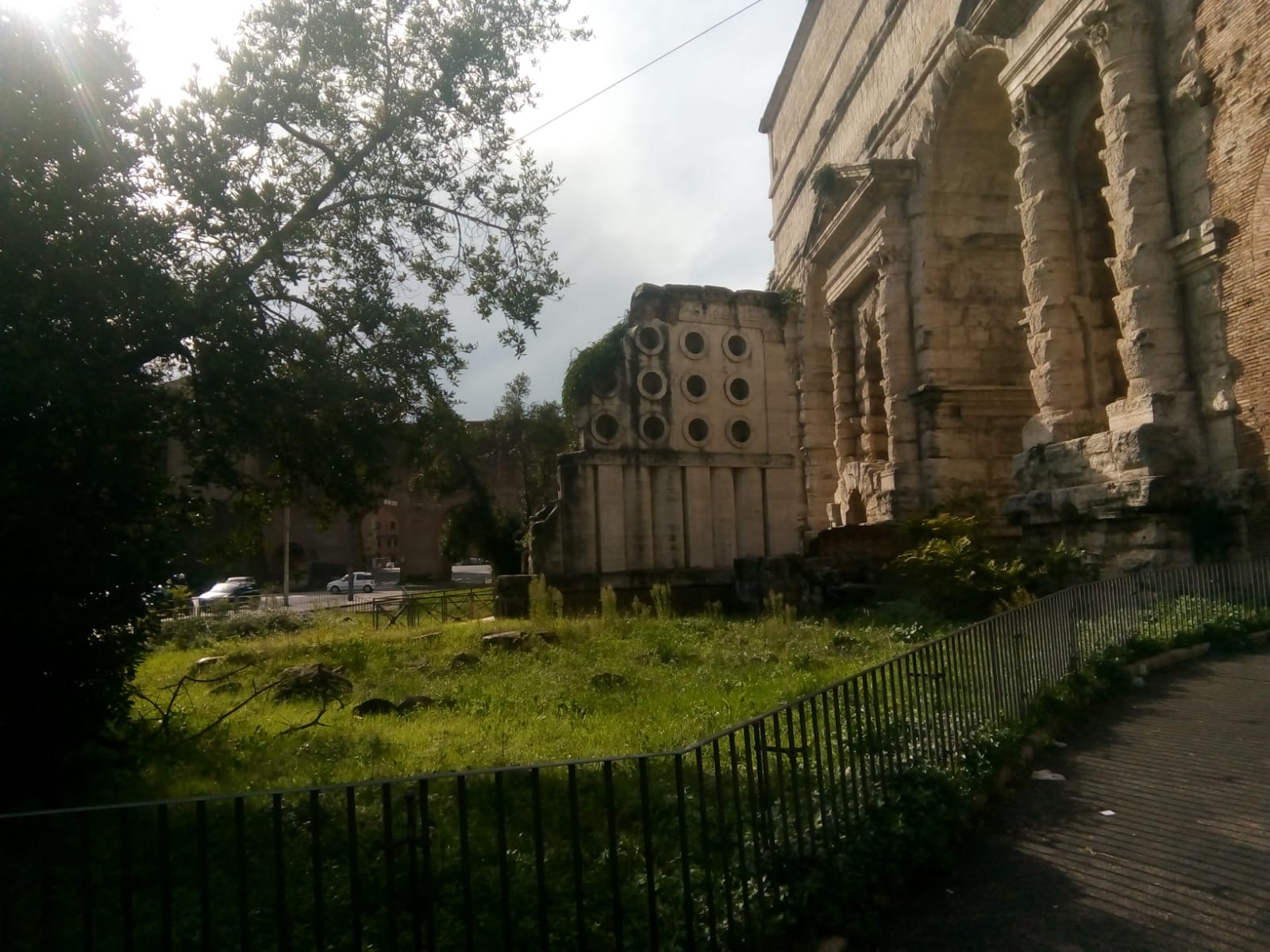
dall’Imperatore Aureliano, cioè le cosiddette Mura Aureliane – passando accanto al famoso sepolcro del fornaio Eurisace.
Giunti nel quartiere di Tor Pignattara scendiamo dal Trenino per andare ad ammirare un’altra monumentale costruzione tardo-imperiale, il mausoleo dedicato ad Elena, madre dell’imperatore Costantino.
Il Mausoleo fu costruito dall’imperatore Costantino tra il 326 e il 330 e forse era destinato a lui stesso, come sembra indicare anche il grande sarcofago di porfido rosso di Elena
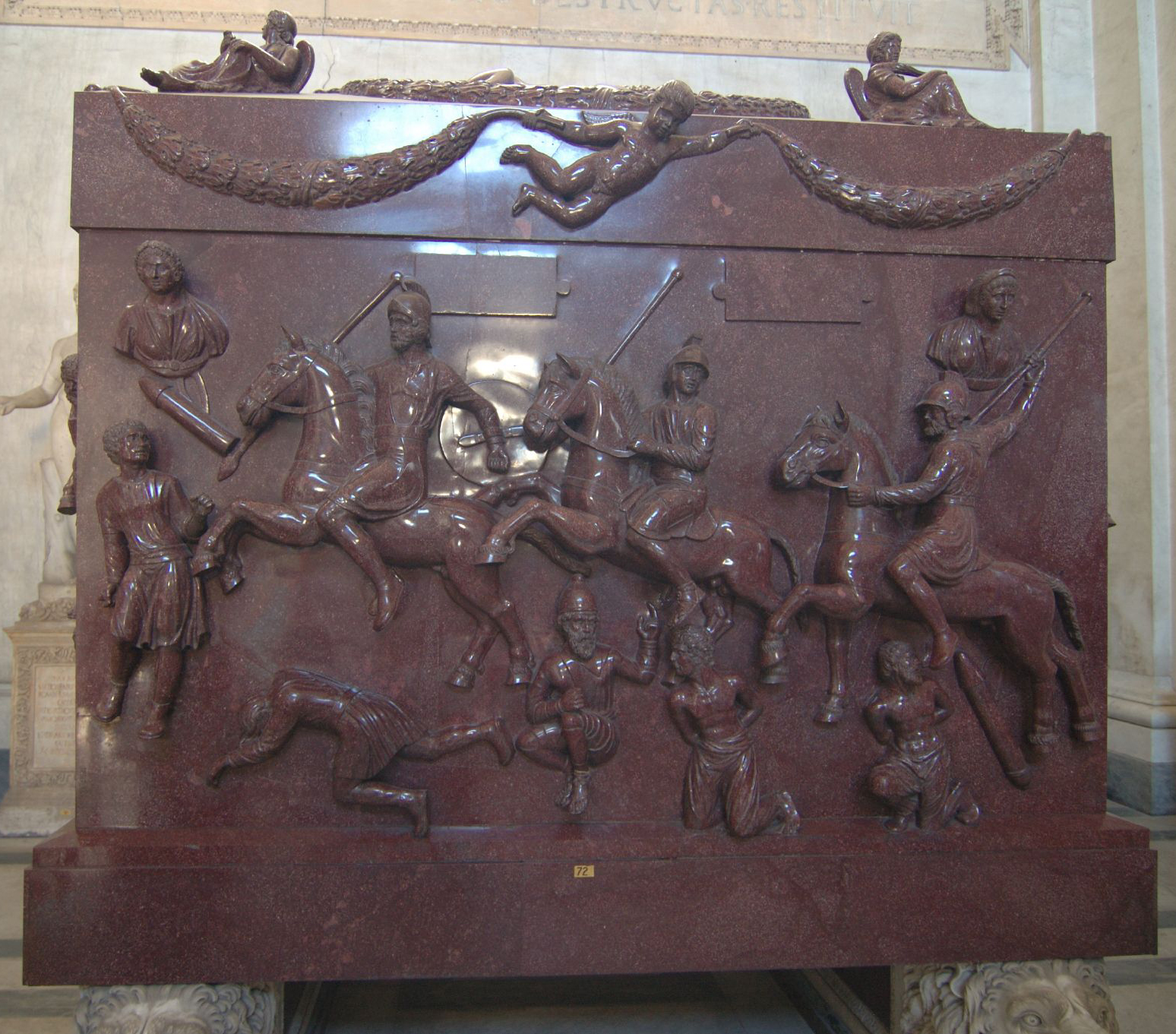
recante bassorilievi di scene di battaglia tra Romani e “barbari”, che sembrano più adatte alla figura di un Imperatore che a sua madre (il sarcofago, asportato dal mausoleo, si trova adesso in Vaticano).
La cupola del Mausoleo, purtroppo crollata, era costruita usando delle anfore, chiamate volgarmente “pignatte”, da cui sarebbe derivato il toponimo Tor Pignattara.

La località corrisponde alla zona che anticamente era chiamata “ad duas lauros”, dove sorgeva un’area cimiteriale, come accadeva spesso lungo le strade extraurbane. Quest’area era anche il luogo di sepoltura degli Equites singulares Augusti, reparto scelto di cavalleria che aveva compiti di scorta agli imperatori (di seguito, foto di una lapide di un Eques Singularis).

Il corpo speciale di cavalleria, probabilmente, fu creato sotto l’imperatore Tiberio (98-117 d.C.) e forse fu sciolto da Costantino in quanto gli Equites si sarebbero schierati, così come il corpo dei Praetoriani, dalla parte del suo antagonista, Massenzio, nella battaglia di Ponte Milvio (312 d.C.). Sia Massenzio che Costantino si erano autoproclamati Augusti senza essere stati essere preventivamente nominati “Cesari” (ossia “vice imperatori”), così come prevedeva il sistema tetrarchico ideato da Diocleziano ma, a differenza di Costantino, Massenzio era stato ufficialmente riconosciuto dal Senato.
L’antica area cimiteriale fu utilizzata anche per la sepoltura di aderenti al culto cristiano, come indicano le adiacenti catacombe dedicate ai cristiani Marcellino e Pietro morti nel 304 d.C. sotto l’azione repressiva di Diocleziano tesa a contrastare la la diffusione, soprattutto nell’esercito, di quella che era considerata ancora una “illicita superstitio“.
Le catacombe, lungi dall’essere dei cimiteri segreti come spesso si crede, erano dei luoghi si sepoltura che accoglievano spesso sia defunti cristiani che “pagani”, organizzati e gestiti dalla corporazione dei “fossores“ (“scavatori”),
Di seguito un affresco (IV sec. d.C.) di un “fossore” di proveniente dalle catacombe Marcellino e Pietro e una lapide di un pretoriano del II° secolo d.c..